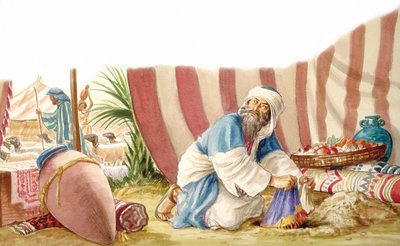"Così, vi dico, c'è gioia davanti agli angeli di Dio per un solo peccatore che si ravvede". 📖 Luca 15:10
—
💌 Apri la porta del tuo cuore
🗣 Speaker: Alessia Zagara Source: https://www.youtube.com/watch?v=y613Kl9yzTY
When Was the Last Time You Shared the Truth
Maybe we should ask each other these questions: When was the last time you shared the truth with someone else? Why haven't you shared the truth with your neighbor, coworker, spouse, children, in-laws? Let's encourage each other to share with someone today! Source: https://www.youtube.com/shorts/8wa7Zmp85FA
2025 NAD Year-end Meeting – Monday Afternoon, Nov. 3
This is day five of the 2025 North American Division of the Seventh-day Adventist Church Year-end Meeting. Please join us in watching the afternoon business session on Nov. 3, 2025. Source: https://www.youtube.com/watch?v=c5YDudIIhM4
Tuesday: Fateful Choices
Daily Lesson for Tuesday 4th of November 2025
Read Joshua 7:19-21. What is Joshua asking Achan to do? What is the significance of such a request? How do we understand his confession?
Joshua asks Achan to do two things: First, to give glory to God and honor Him. Second, to confess what he had done without concealing it. Achan was supposed to give glory to God by admitting what he had done. The term used here (todah) can refer to thanksgiving (Psalms 26:7, Isaiah 51:3, Jeremiah 17:26) but also to the confession of sin (Ezra 10:11).
Unfortunately, the biblical text gives no indication that Achan showed any sign of real repentance. He hoped until the end to remain hidden. His defiant attitude qualified him to be regarded as a high-handed offender, for whom there was no atonement according to the law of Moses (compare with Numbers 15:27-31).
The words of Achan in Joshua 7:21 are reminiscent of the fall of Adam and Eve. Eve saw (ra’ah) that the tree was desirable (kḥamad) and finally took (laqakḥ) from its fruit (Genesis 3:6). In his confession, Achan admits that he saw (ra’ah) in the plunder a beautiful mantle of Shinar, 200 shekels of silver, and a bar of gold. He then coveted (kḥamad) and took (laqakḥ) them. Just as in the case of Adam and Eve, the choice of Achan reveals that the sin of covetousness is the sin of unbelief. It suspects God of not wanting the best for His creatures and of hiding some exquisite pleasures from them, which belong to the realm of divinity only.
Besides the allusion to the primordial human fall, the text highlights a stark contrast between the attitudes of Rahab (compare with Joshua 2:1-13) and that of Achan. The one took the spies to the roof and hid them from the soldiers; the other took forbidden things and hid them from Joshua. The one showed kindness to the Israelite spies and helped them secure victory; the other brought trouble on Israel by his greed and secured defeat. The one made a covenant with the Israelites; the other broke the covenant with Yahweh. Rahab saved herself and her family, and they became respected citizens in Israel; Achan doomed himself and his family to death and became an example of ignominy.
|
Think about the sin of covetousness. How can we avoid succumbing to it, no matter how much we have or don’t have? (Compare with Luke 12:15.) |
 (0)
(0)Local Churches and ADRA Work to Aid the Caribbean After Hurricane Melissa

3 November 2025 | Between October 27–30, 2025, buildings were leveled, streets were flooded, powerlines were toppled, and communities were destroyed in the wake of Hurricane Melissa. Classified as a Category 5 hurricane, the highest category, the effects of 185mph sustained winds were felt in Haiti, Cuba, and the Dominican Republic. The death toll in […] Source: https://atoday.org/local-churches-and-adra-work-to-aid-the-caribbean-after-hurricane-melissa/
- « Previous Page
- 1
- …
- 30
- 31
- 32
- 33
- 34
- …
- 8016
- Next Page »

